For decks, I recommend avoiding paint and opaque stain. I don’t like them as an option.
Opaque stain is, wait for it … paint. The low maintenance of lighter stains is a no-brainer to me. Looks great, less filling (of the painter’s wallet every 3-7 years). Here is how to stain a deck with key tips that you will need. These are things I’ve been using for all of my 30+ years as a painter.
Related: read about my favorite products I personally use to stain a deck: a short summary of Deck Stain vs Deck Paint. It’s got all the best deck stains available these days and read about my top deck stains of every type.
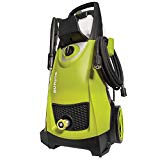 Biggest time saver: I always use a pressure washer to start any deck prep. Click on my favorite pick one you see here. I’ve had mine for 10 years, and it has paid for itself a hundred times: I just can’t kill my old one: I want to kill it to get a new Sun Joe. “I want you to die, Mr. Bond.”
Biggest time saver: I always use a pressure washer to start any deck prep. Click on my favorite pick one you see here. I’ve had mine for 10 years, and it has paid for itself a hundred times: I just can’t kill my old one: I want to kill it to get a new Sun Joe. “I want you to die, Mr. Bond.”
Cleaning and Brightening: You have read websites saying clean/strip then brighten, then stain. Cleaning yes, but brightening is not a requirement. If you used a cleaner that is like a soap (darkens the wood too), yes you need a neutralizer to alter the pH (make it more acidic in prep for stain), but if you just pressure washed, let it dry and stain it. Brighteners are a good idea for semi-transparent stains when you know you want the beauty of the wood to come through the stain.
For cleaning, I still like Simple Green. It removes mold too. For the brightener, DEFY has a great product. Again, most of the time you just need water pressure.
But start slow: and use the rotating tip that SHOULD come with every pressure washer, but does not. The rotation protects the wood from gouging, even in the smaller machines. (Choose from various p.s.i., and one has a nice spool to reel in the hose.) Details on how to pressure wash a deck are below.
Need bigger? Washing a truck? Go gas or go home. Honda motor, very pricey, but will pay for itself if you are a pro and if not, you’ll never have major problems with it.
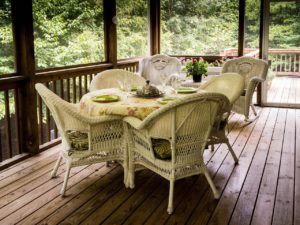 Picking deck stains: There are also great products from Benjamin Moore but you have to buy them locally–(company website). The links I share are also excellent deck stains. You will save money by spending more on quality deck stains upfront. Think of future labor savings! We have a post all about the best deck stain.
Picking deck stains: There are also great products from Benjamin Moore but you have to buy them locally–(company website). The links I share are also excellent deck stains. You will save money by spending more on quality deck stains upfront. Think of future labor savings! We have a post all about the best deck stain.
Short summary of how to stain a deck (full details below)
- The tools you will need are compiled on our deck tools list.
- If your deck was stained before with heavy (opaque) stain or painted: pressure wash (how-to is below—this will do most of your prep—use water pressure to remove chips, etc., but be sure to cover the land with drop cloths.
- If your deck was not treated before or was but with only light (semi-trans or fully transparent) stains, you don’t have much to do: pressure wash lightly. Ba da boom.
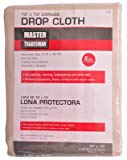
- Let the wood dry completely.
- Remove or mask well the door/window hardware you do not want stained (even if you do not spray) and spread drop cloths. This stuff has a mind of it’s own.
- Create a central work area and cover it with cloth and/or plastic
- Cover all your cans when you are not opening or using: this keeps dirt and objects from polluting your liquids, etc.
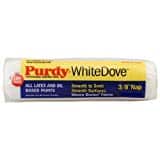
For all paints and stains: 3/8″ is excellent for floors and decks. - Begin staining: Use a roller for very fast results—best to roll small squares with a regular roller cover (click on photo) and then brush into all cracks and grooves well with a very good brush (this is my biggest tip to save you time). This is described further below.
- No need to re-coat if you are using lighter stains, but check the can label. Some stains do not allow a 2nd coat! Others do. But with opaque stains, you may need a 2nd coat (no matter what you saw about one coat stains on TV !)
- Soak brushes and rollers etc., right away until you have time to clean them which is easier than you think.
- Spraying deck paint is explained below as well.
How to stain a deck (big time-saving tip ahead)
1. Preparation
—Two basic conditions (and how to pressure wash) in this section—
Stain a deck that is new
If your deck is in good shape (and not pressure-treated wood), go to the painting section of how to stain a deck (below). Lucky you do not need to do any sanding or any prep other than a washing (for new decks only). See below regarding pressure treated wood: be careful here.
Prep for staining a deck that’s beat up
Scraping old paint or opaque stain is very hard work. For that work, I would hire a young person with young wrist tendons: I’ve damaged mine doing the scraping.
If you scrape it yourself, have a good set of scrapers: see my favorites on our deck tool list. You must have a good metal file to sharpen every 10-15 minutes of scraping: yes, that often. Dull scrapers cannot cut a sharp edge that you can sand and later coat. This short video show how to sharpen with a file.![]()
-
- The pull scraper you see here is all you really need
- This multi-tool is very useful in many ways: my 3rd hand
Tip: We pros try not to do much hard work: we rely on electric tools. We went electric, like Dylan.
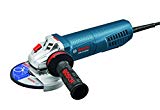 Stripping paint from metal and wood, etc., could involve other methods like including a drill attachment or my favorite…
Stripping paint from metal and wood, etc., could involve other methods like including a drill attachment or my favorite…
A variable speed grinder you see here. Looks a bit pricey at first, but worth every penny and can be used with diamond cutting blades, etc. Mine has been going great for years of professional work.
Attach to any 4½-5 inch grinder, the very efficient 3M Sandblaster pads (click on photo). Here is a video of how it’s done. Depending on your type of grinder, you may require the universal adapter pad.
This kit is not expensive at all considering the time you save, then you have a great tool that can use cutting blades, etc. You will need an extension cord: an awesome perfect rating.
Start with a pressure wash
Deck wood can be washed with the garden hose (but it’s slow and not very efficient). We use a small electric pressure washer. It’s shown at the top of this page.
Watch a pressure washer in action in the video at the bottom. It’s not essential to have the extra hose, but it’s good to have a long extension cord with a capacity of 15 amps (I can’t get over the extension cord linked in the last section: ratings that could not be faked).
We only use a washer with the rotating tip (called ‘turbo’ tip) prevent damage to wood.
* Don’t intensly pressure wash “pressure treated” wood. We explain why in our other post that discusses whether you should Paint or Stain Deck.
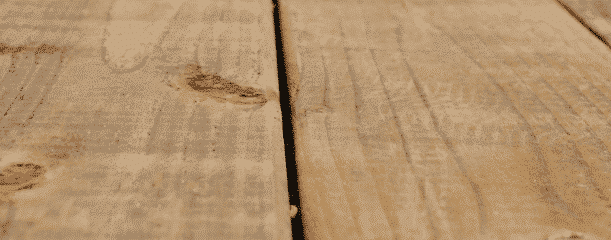
2. How to stain a deck: tools and sequence
Big “tip”: use both roller and brush
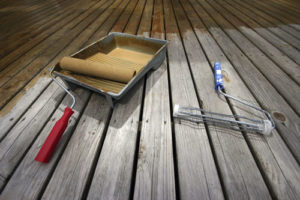
How to stain a deck in a very fast, but very proper way. What stain should you use? We cover that in another short post on the best deck stain.
How to stain a deck with a roller and brush
You might think you either spray or brush to stain a deck, but we use a normal 9-inch roller to get the stain evenly were we want it, then use the brush to wet the areas that the roller does not reach. Why?
What takes up all your time when staining a deck is going back and forth between the can and the wood. But the roller holds many times what the brush can hold. So the roller is just doing the heavy lifting—you are still brushing your deck, but your brush rarely gets dipped in the bucket/tray of stain.
For any deck stain or paint:
- Dip roller with a good deal of deck stain (don’t let it drip, just like you would with deck paint)—get as much stain as it will hold—so it’s not dripping.
- Start rolling gently and let the stain come out of the roller, pressing more firmly as it dries.
- Follow up with a brush. (Big tip: you don’t need to put a brush in the liquid—just dip roller, then ‘tip’ out the surface with the brush. See how fast you go? Easy.)
- Some stain will drip through the cracks of the deck but you can catch it in plastic under the deck if you want to try to save it (sure you can re-use it ! I would).
- Repeat steps 1-3.
- The roller, brush, etc., are all on this deck tools list.
Spray that puppy?

Spray painting a deck is many times faster than rolling or brushing, but you have to consider the damage overspray stain will do. You have to be very careful and move all the cars around.
The two makers of paint sprayers you can trust are Graco (website) and Wagner (website).
Read our post about DIY airless sprayers.
Two recommendations for two budgets: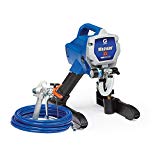
- The best homeowner paint sprayer today is hands down the Graco Magnum line you see here. It will last a lifetime with proper care.
- The budget choice is the Wagner Flexio 590. It has a very reasonable price for what you get.
- Using a very light stain? I researched garden (backpack) sprayers for this and there are some that of course double in the garden, duh. Read about the 3 sprayers (but they are not all for all stains).
Airless spray tips wear out after many hours of use, and if you buy a well-known brand, like Graco and Wagner, you can easily find tips easily.
Some keys to spray painting a deck:
- Carefully mask what is not getting painted: use plastic, paper, and/or canvas and lots of tape. (See a great hand-masking tool for this in the deck tool list).
- In this video, I show how to use this great 3M hand masker. So usefull and well-made.
- Practice spraying technique first: You can just put water in your sprayer to practice this. Keep the sprayer hand moving at a uniform speed, and when you reverse direction, try to make a quick flick of the wrist (avoids puddles).
- Spraying Oil? Keep the tip of the sprayer wet with thinner: you can use a wet rag or a small can of paint thinner.
- Spraying Latex? Soak the tip in water when you put it down: if you don’t it will clog fast.
- Read about the best deck stain and even if you are spraying opaque stain, it should cover in one coat.
- A short video from Graco is excellent to see how it’s really done well.

Stain a deck made of pressure treated wood
Wait 6-9 months after installation to put any stain or sealer on your pressure treated wood: it’s still wet from the factory and if you don’t wait, you’ll have a big problem later on. I discussed this more fully in our post on choosing whether to paint or stain a deck.
3. Maintenance?
Annual upkeep is not really necessary for most lighter stains. Most semi-transparent just need a quickl pressure wash, then re-apply your product. Read the label to be sure this is right for your product.
Keep an eye on the opaque stain, however. In fact, if you choose an opaque stain, which is cracks much like paint, read the maintenance section, (Section #3) of the post on how to paint a deck.
- Tools? The list of any tool you could possibly need is on our full deck tool page.
- Not enough tools? A complete list of painting tools for all types of painting jobs.
- Not sure about the roller cover? We wrote about it, simplifying all the best paint roller covers and what they are for.
- Don’t like cleaning? Read the best way to clean a paintbrush: you will make them last a lifetime. Read about the easy method in “How to clean paint rollers: like magic!“
Here is a video showing how to do pressure washer paint prep before staining your deck.
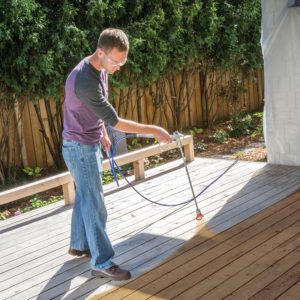
Related:
Be sure to have all the painter tools that you need
How to Paint a Deck With One Big Timesaving Tip
Best Deck Paint (with a Big Word of Caution)
Best Deck Stain and Sealer: Complications Simplified
Paint or Stain Deck? (bonus: Deck Restore Products That Don’t Work)
Spray Wood Stain – Zero-Maintenance Deck Stain Treatment
Any questions about how to stain a deck? Let me know in the comments. Remember, how to stain a deck: there is not much need for brush dipping! Just dip when you do corners etc, where the roller cannot reach.

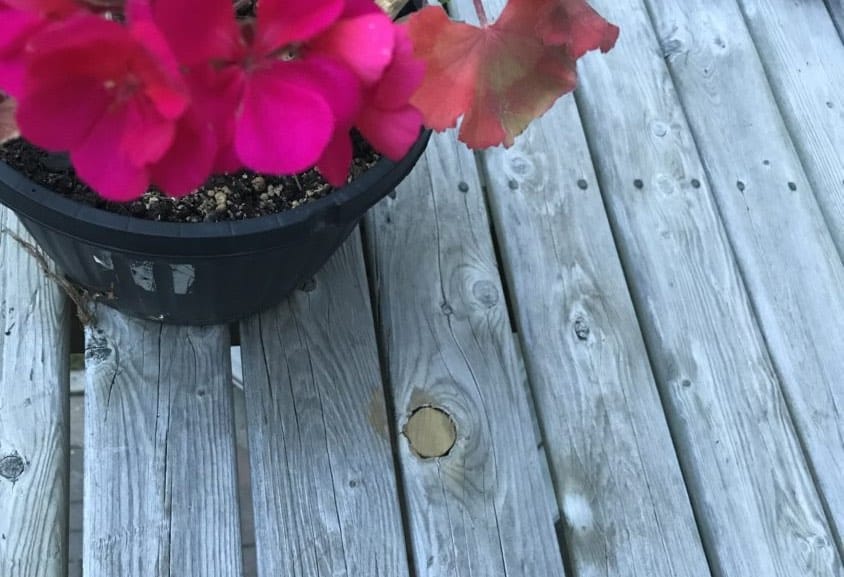
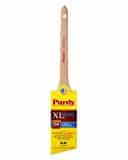
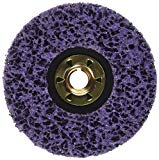
Your advice is fabulous. But. You underestimate the potential stupidity of some readers. Like us. We think of incredible shortcuts that will probably be costly in the long run, or require a redo, or make professionals laugh.
We are hoping, before snow falls in the Northeast, to restain two decks of 400-500 SF each:
* At camp in the Adirondacks, covered and screened porch (not really deck) with dark solid stain (so it’s probably a paint), a few areas have rubbed bare but mostly it’s solid, and we’ve heard some suggestions to scuff with a floor sander or buffer. That could be overkill and it might also chew up the soliding (no gaps) decking, perhaps Douglas fir circa 2000.
* At home in NJ we need to save and restain a time-worn pressure treated deck that we, ah, quote saved 4 years ago with Behr Deckover. (Before I knew about your site.) Now the stain is pulling up in (many) places and holding tight in others. Some of the wood is badly worn and we have ready a dozen replacement PT deck boards that have been aging for a year. We don’t like the idea of all that scraping the existing boards on our knees. Pressure washing doesn’t remove the Deckover in most places (in others it flies off). We thought of stupid things like pull up all the decking and reverse it. Or removing and running the boards through a planer assuming it doesn’t immediately gum up the blades. We’ll be in the house maybe 5 more years, we don’t want to screw over the next buyer, but we also don’t want to put down a new deck for them.
For prep and paint/stain tools we have both gas pressure washer (old Honda motor, still runs like a champ) with the rotating nozzle and a smaller Husky electric. We have a Graco X7 sprayer with spray tips and the pressure roller. We have the 3M masker and a long handle to hold up cardboard masks. We have respirators. We have scrapers. We have fabulous (Klein) kneepads. We are no longer working at jobs so we have time on our hands. We have all the buckets for cleaning and soaking, ditto the strainers, ditto throwaway coveralls. We’d rather not get down on our knees and scrape but will if it’s the way to go. We are open to what brand stain we use, both decks will wind up dark brown.
Any thoughts on how to proceed to succeed, or at least not look like (compleat) idiots?
For the solid stain, treat it as paint: scrape, sand repaint. Only prime raw wood. No need to sand it all if it’s latex and your applying latex. Just clean and dry well.
NJ: I’d add more paint and let the next owner write to me! Reversing planks does work. PT wood is hard to paint as it’s treated and does not behave like wood. Again, just prep and paint, and do maintenence every year until you sell.
Rotating tip is key so you don’t damage wood. The X7 is a great sprayer for a homeowner…see my post on ‘best paint sprayer’
Brand of stain? Any top brand. Ben Moore and SWilliams always come out on top.
Hope this helps!
b
Thank you Brad. Your website info is just what I needed to read. Replaced 5 rotten boards on the neglected deck yesterday, feeling frustrated that it looks awful, all sorts of colors and stripes. The green mold adds even more frustration. Will recover and read more to formulate a plan. I wish I could use the lifetime product, but our deck is too ugly, I will have to camouflage it somehow. Very hard to find locally. The rotary nozzle tip is most appreciated. I never would have sprung for that on a deck, now I will for sure. Thanks again!
Remember also that time will even out the look, but do stay on top of the mold annually.
Good luck.
b
We had a painting company paint our unfinished deck. One of the young men used a brush to get between the boards and the other one used a roller to do the flat boards. They finished it up yesterday. I went to look at it and noticed that the area between the boards don’t cover the depth of the boards in a lot of areas. I could see this as soon as I walked onto the deck. My husband they probably didn’t have a thin enough brush and isn’t concerned. I could fit my finger into the crack and touch the bottom of the board. Is this normal where you see the bear sides of the boards? We paid over $3,000 to have this done and I want it to look like it.
Sounds abnormal to me. But if the wood is pressure-treated wood you don’t really have to worry except about looks.
They used a good primer, right?
If it’s pressure treated and no primer or if it was done incorrectly, you’ll have much bigger problems. But that’s for later in case it falls off.
In this case, have them come back with a brush. If you have paid, be nice. If you have not, insist.
You could allude to the fact that you have more work for them and they will want to make you happy. If not, what is the excuse for missing the wood? Too hard for you man? Do they know about your brother-in-law Sol, who is a lawyer who does things for you for free? They will Hate old Sol.
Anyway, young men and paint should be kept far apart, or with many years of close training. They just don’t know what they are doing.
Good luck to you and Sol.
Can you use a rag instead of roller & brush to apply stain/sealer?
Yes for stain, but sealer generally you want to use a brush, a good one that does not shed bristles. Stain can be applied with anything, then let it sit until it’s as dark as you want, then wipe off excess…so the final touch is a rag anyway. Hope that helps,
B
Thank you for your recommendation on Ben Moore’s Advance for trim. I have always used SW enamel, but your recommendation was life-changing. Now to decks…If re-staining a deck that was previously done in a semi-transparent oil-based stain, would your first choice still be Defy’s #1 (even though it is a water-based product)?
If it’s aged and worn off, maybe. But buy a gallon, do a test in a spot and see what happens. My prediction is 50/50 it will not bead up.
Good luck,
B
Is roller painting a deck better than spray painting
Hi. I would say yes for paint and no for stain. You need a brush for the little corners for both.
b
My painter is spraying my wood fence with an oil based transparent stain and I notice overspray on my pavers, cement and house. He says it will dry clear and not leave a stain but I’m not so sure. Is this true or will I be cleaning it off and how do I get it off?
It may leave a ‘wet look’. Being friendly, get his name. Tell him you may want to hire him. Then if there is a problem, ask him to come treat all the paver so they are the same. A nice waterproofing is good for them.
Same for the cement.
but the house is a different issue. Get out there with your camera. You may need that evidence.
Don’t talk to the painter anymore. If you are unhappy, a lawyer may be in order. First of course, you would nicely ask the painter to rectify, but record all your phone calls and try to use email/text as much as possible.
Some painters are not careful. Overspray is a big mistake. He should be more careful.
Good luck
Definitely take photos and be nice to the painter. Let him know you may need his services in the future, but you don’t need to say why.
If the pavers and concrete show a ‘wet look’ in the future, you have photos to show that it’s his fault. He will be reasonable if you are.
If not, you might need a lawyer…hope not.
For the house, also photos, but this may require cleaning. You will know how much film he got on as overspray by looking thru your windows.
He really should know better and if you are reasonable, I’m sure he will be also.
Good luck.
B
Great info, thanks! A few questions:
1) How long does the Eco stain need to dry before putting everything (rug, chairs, etc) back on my deck?
2) How many dry/non-raining days do I need after I stain, to ensure the stain isn’t affected?
3) Do you recommend using a sealer on top on the Eco stain? If so, which one?
Thanks again for the tips and info!
It takes as long to dry as water.
I would say one day to dry before rain, just to be sure stain is fully dry, but 2 for safety.
They don’t recommend it and there is no need as the stain changes the chemistry of the wood so it cannot rot.
Just soak it really good. I did not brush, but you could to get in the grooves and corners etc.
Good luck and let me know how it went!
If I am staining a wooden house and I am using a airless sprayer is it necessary to brush after being stained? Or even with a back pack sprayer do I need to brush afterwards? And can I use a broom?
Hi. Yes and no. Many painters will not, but you really should to push in the stain into the grain. We’d use a very wide brush…4 inches or more. You don’t need to be picky if it is semi-transparent, but if opaque stain, yes, you would brush like paint. It is paint.
A garden sprayer is awesome for light stains, not opaque tho.
A broom is an interesting idea. You might not get into all the crevaces tho. Let me know if you do that… a picture would be great! I’d post it here. Let me know by email?
Good luck!
B
We have a pressure treated platform deck ready for first stain. It’s approximately 42’x52’. How long do you think it would take to roll it? No railings, one long step! We are trying to dodge weather and chances of rain is why I ask. If we treat it one day and there’s 50% chance of rain the next day, is this a no go?
Also, roll first, thank go in the cracks with excess stain that’s just laying there? I’m scared to death that we are going to screw something up as we have never done this before. How thick should the stain be? Just avoid puddles?
Any tips on how to remove the ink stamping on the deck boards before stain? I really didn’t want to seal them in.
Thanks Brad! Hope to hear from you soon.
Easily in one day. I cannot tell your speed, but these go fast. I hold a roller in one hand and brush in other and I do the railings etc and brush where roller cannot hit. No brushing what the roller can do.
Don’t fear: do a test section. Look at weather also… these days very accurate to 5 days. 50 percent is way too high. Wait for 0.
You can sand the ink, but if you have a darker stain, they will sort of be hidden.
Not sure if you are using semi- or opaque stain.
Just avoid puddles. You will see stain soak in in your testing.
Good luck!
easy
Which should be stained first? The deck railing or the deck floor? I would think the deck railing as it will be slower going to stain every rail on every section. And how should the railing be stained? Brush, small roller or spray? There isnt much space between one rail and the next, so not sure if a brush or a roller would work.
Deck is gray weathered, pressure treated wood, in good repair, natural wood-no stain or paint.
Tips on deck railing would be much appreciated.
Thank you!
D
Hi. You are asking the right questions. I don’t know what your stain is…but in general, to get into the nooks and crannies, yes a sprayer is good. I have used even old Windex bottles and roll/brush the big areas… But my fav way is a garden sprayer… clean well and you’ll have it for years for all kinds of things. Yes, do railings but still use non-leaking cloths to protect floor before you stain it as the drips will always show, even after you stain. We always work from the top down.
If you have never sealed your deck and want to only do this once… look into the Eco-Wood lifetime stain, you can also spray. On this post I link to the video. It’s fine for decks, but the color will fade if you use the color versions. You never have to treat your deck again…It’s what I put on my deck. Ps the pressure treated wood alone will do the preserving, so adding anything for protection is almost not necessary. But you timed it right: let the green/brown treatment fade, then add color. Perfect. Good luck!
We have old paint on our deck that’s worn out and looking to completely remove and add a stain. Going after a weathered, raw and natural look. Can you share more info on sanding and tips to get to the nooks and crannies of a wood deck with railings?
Mechanically. First use water pressure … find the Sun Joe I talk about on this site… get the rotating tip so you don’t gouge the wood. That should get 90% of the paint. Cover all grounds as the chips really fly and if they get in the grass… you see.
For tight corners, a very sharp scraper. Get a metal file to keep it sharp. It’s not easy work, but don’t rush… just listen to a baseball game. A slooooow one.
Then, a grinder. Get more than one disc and don’t let the paint melt in it. Go slow and steady. Take off enough wood that you see no more paint. Search this site for ‘grinder’ if you don’t have one already. Then, look at the post on ‘zero-maintenance’ deck stain. I used it. Once per lifetime. The ‘silvery patina’ is no color, just weathered look.
Good luck!
Is it necessary to sand before applying preservative (to the top of our wide deck railings)? My wife wants me to sand AND wants to save the faded color, but this seems impossible…
Hi. I guess it depends on what you are planning to apply. Often the prep instructions on the label of your product will be clear. If you have splinters sticking out or a very rough grain, it cannot hurt to knock that back. If you have previously treated the wood, and you have any kind of a covering like paint or opaque stain, yes very much so, you must sand and/or remove that depending on what you will apply.
I don’t see why sanding the wood and having a faded look are incompatible. The look will depend on the product. If you lightly sand (not taking off much wood) your old wood will be protected but still look like old faded wood.
Anytime you apply a new product, it will renew your deck’s look for some years. So many products only last a few years depending on climate. Always buy a small quantity and do a test in a few spots: very weathered spots, then, underneath where it still looks ‘new’ etc. That way you’ll know for sure. Good luck.
B
How do you tell if your deck has been painted or stained? Can you stain it even if it’s been painted? I guess we’re a little skeptical. It seems like staining is the way to go but it will be so much prep work.
You can use OPAQUE stain, which is paint, but not the more transparent stains over paint… But you can paint over stain if you prep well. If it looks like wood, maybe with some weathering and maybe some color, it’s been stained probably. If it’s been a long time, you can probably pressure wash then paint. Use the right primer! My advice is stain as it never needs scraping: just wash and re-stain when needed. It’s a lot of work anyway. The once in a lifetime products I talk about on this site are still my fav. Good luck.